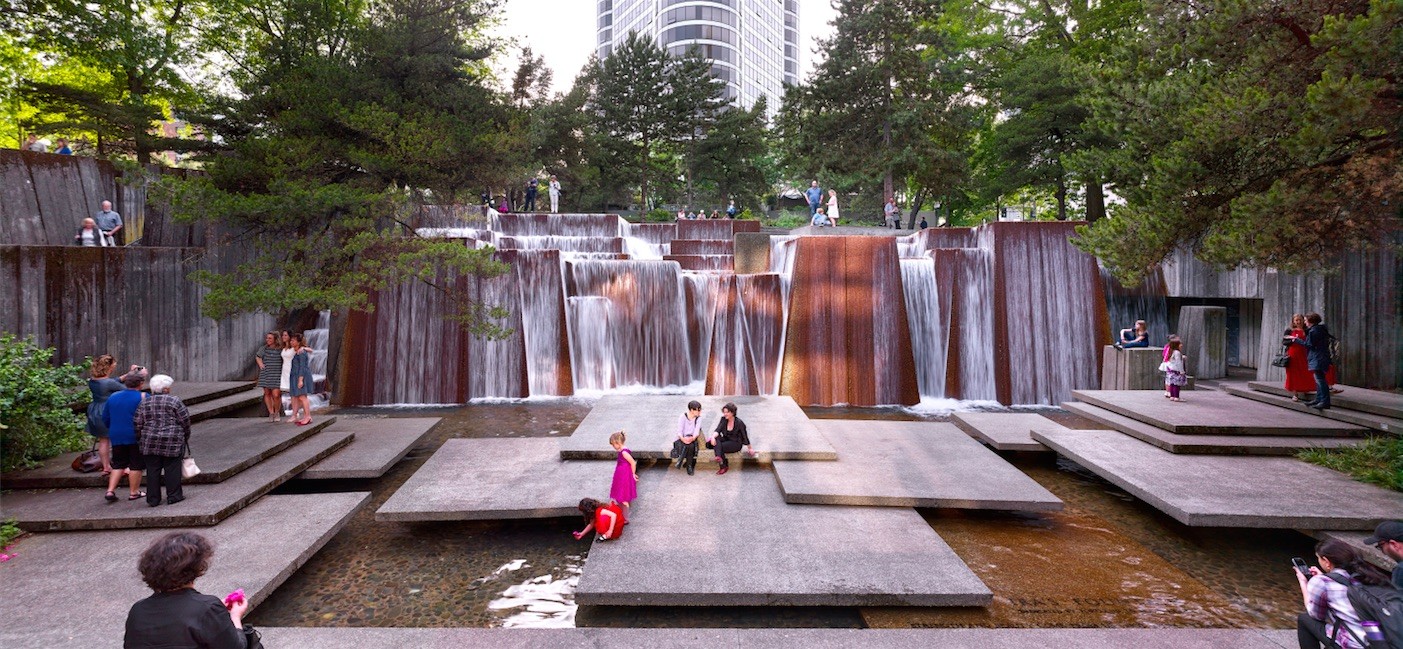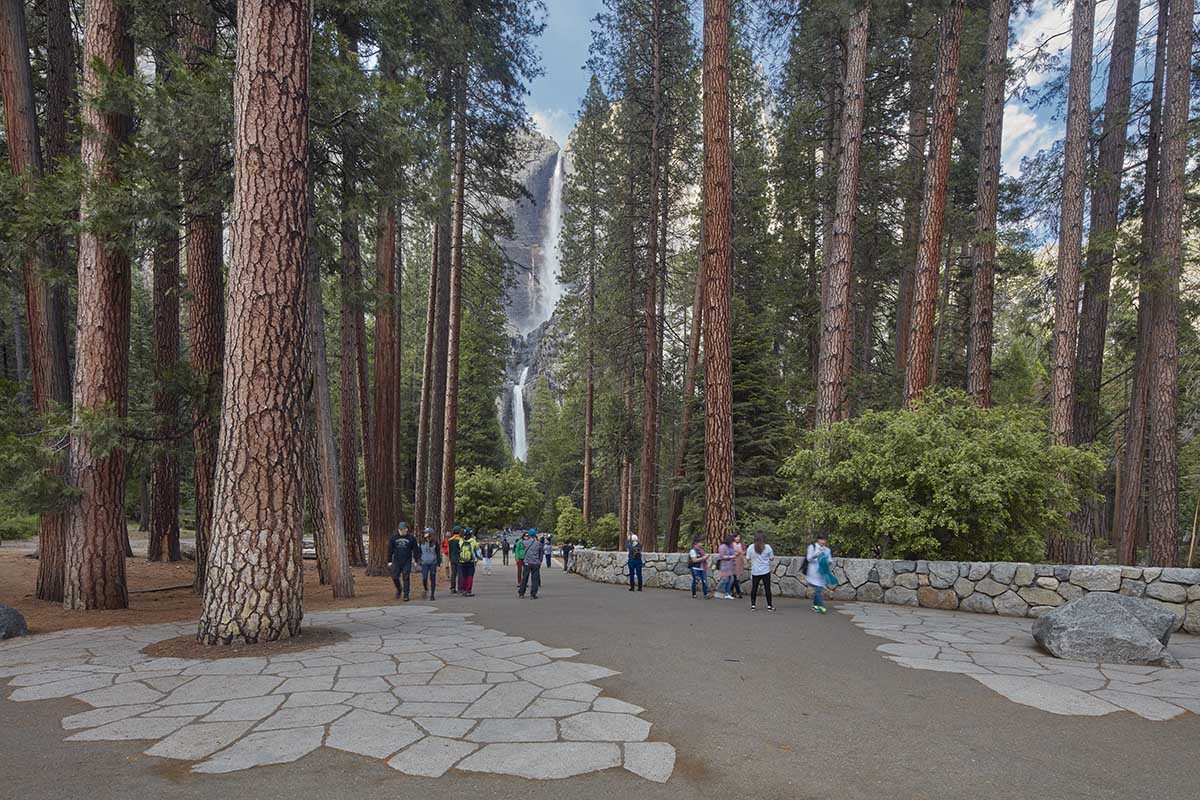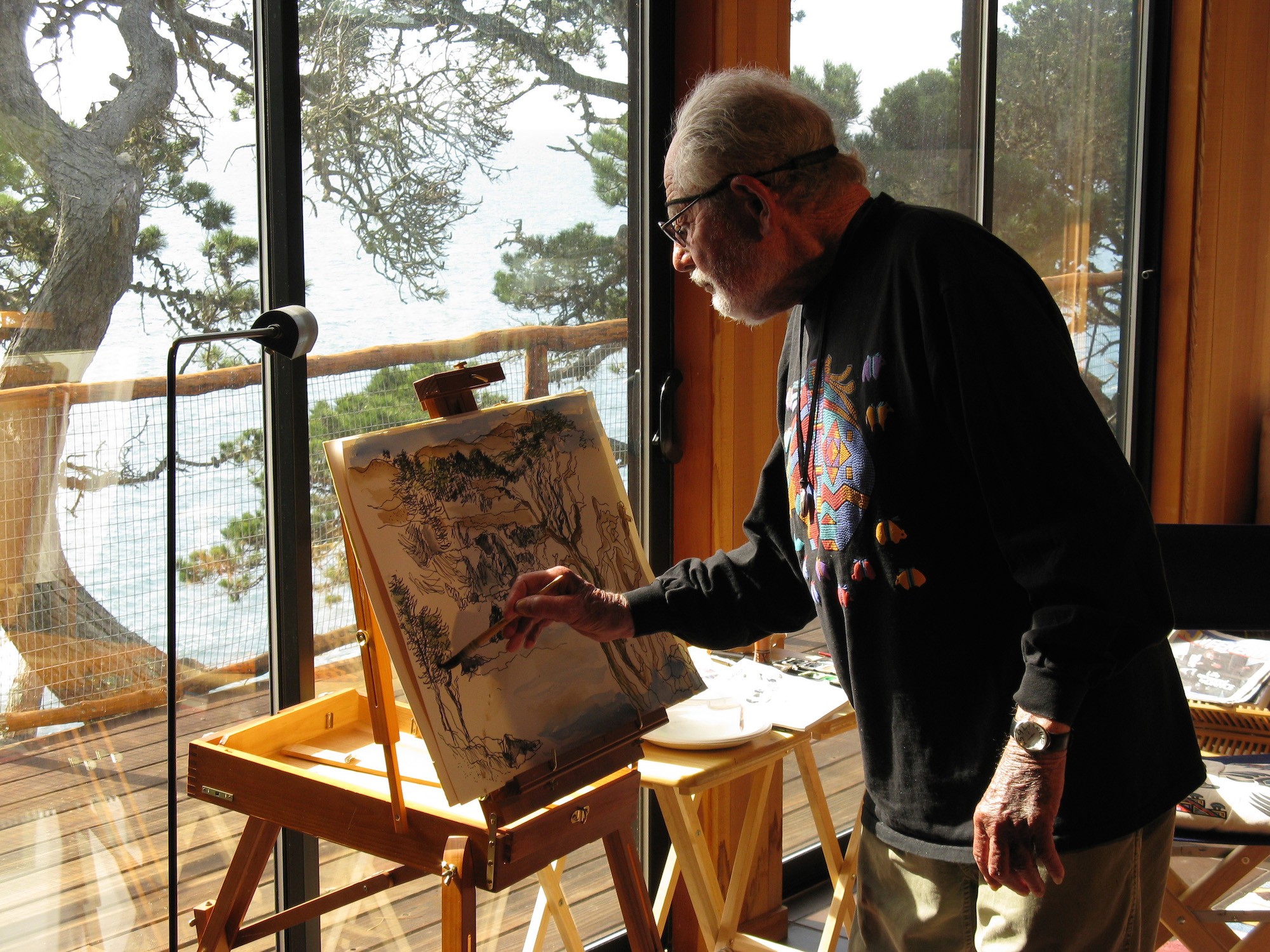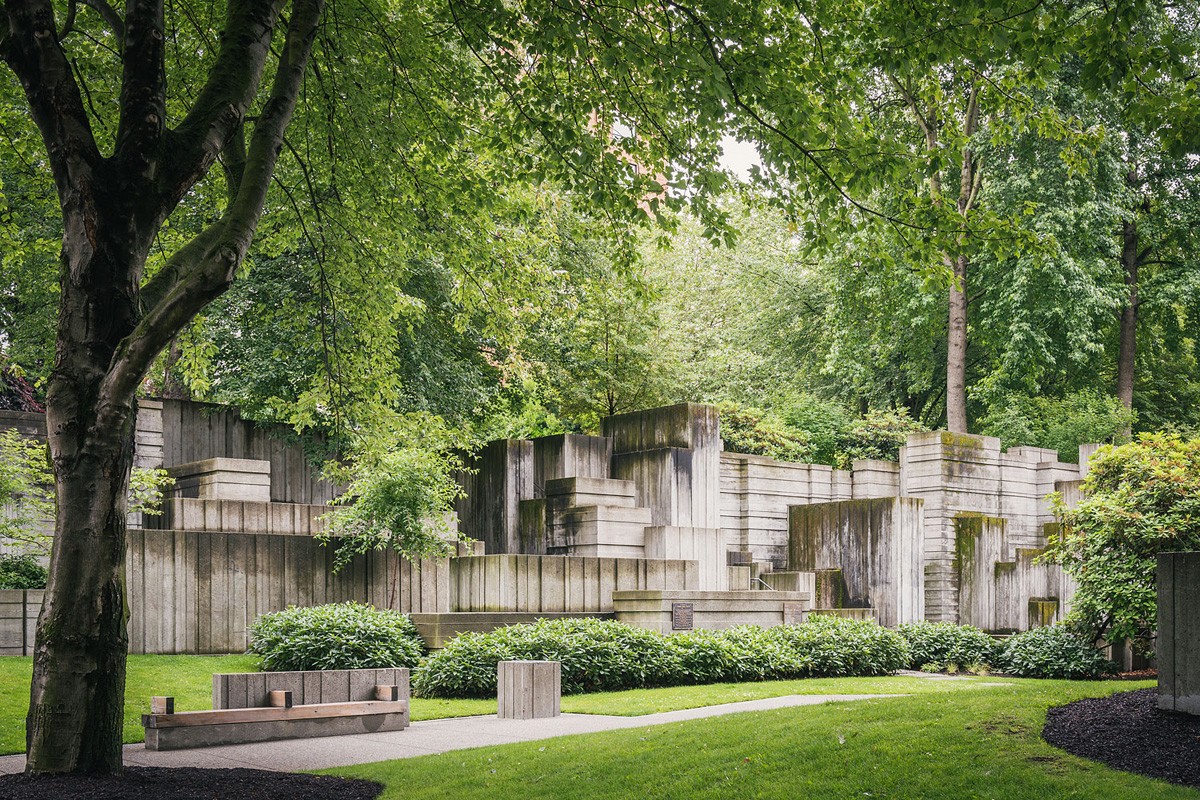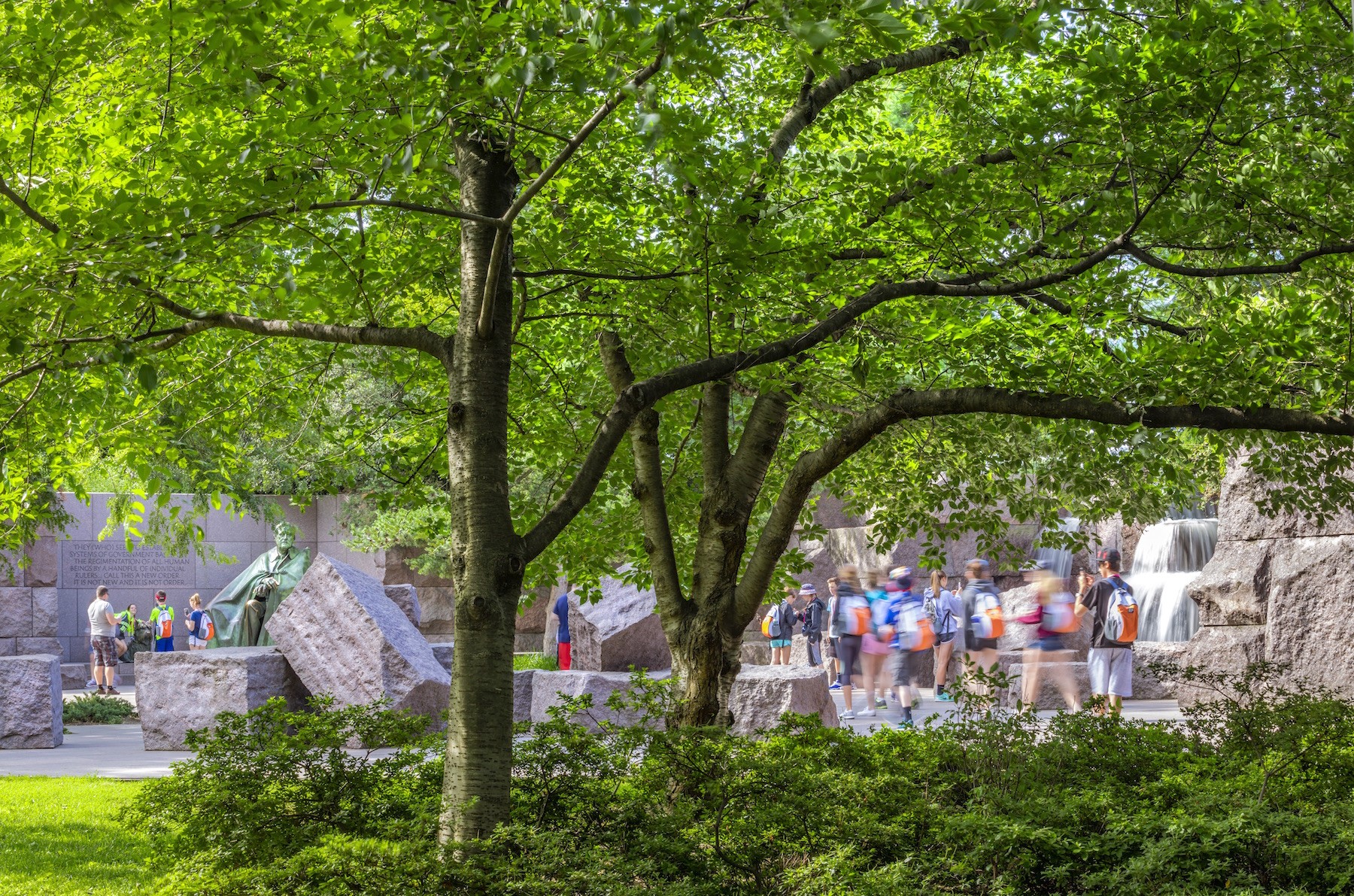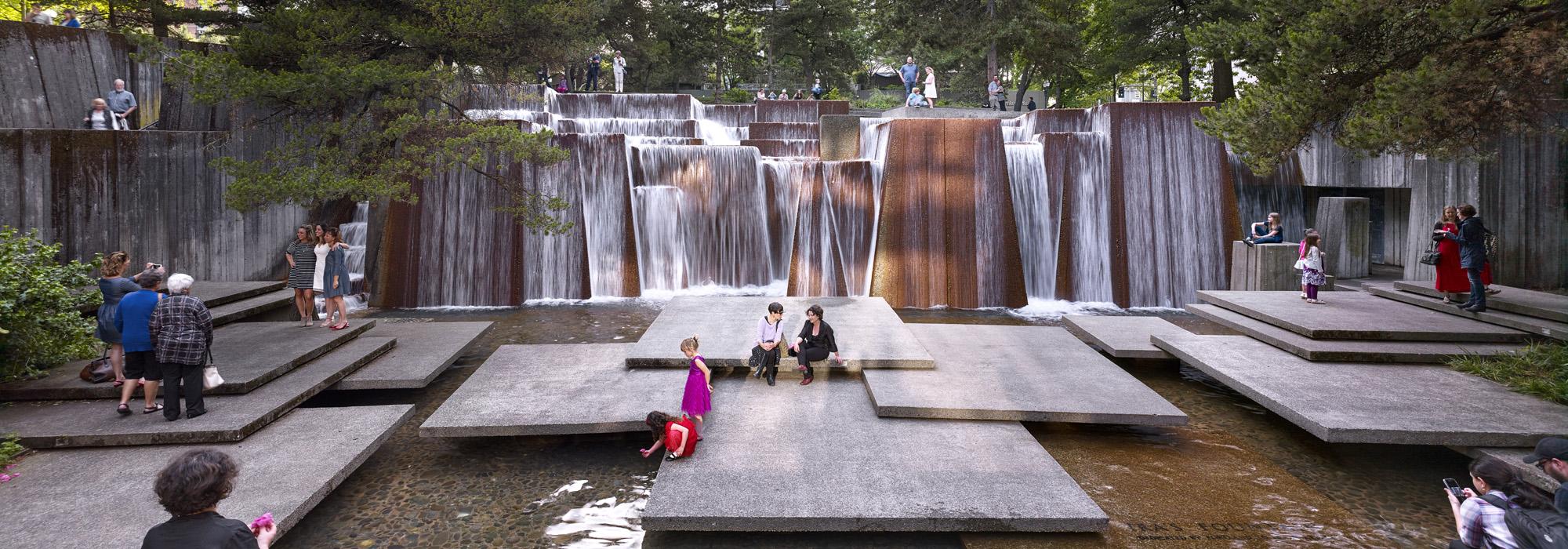Influential Modernist Landscape Architect Lawrence Halprin Featured in New Exhibition Opening at the National Building Museum Nov. 5
Media Contact: Nord Wennerstrom | T: 202.483.0553 | M: 202.225.7076 | E: nord@tclf.org
Exhibition features More than 50 Newly Commissioned Photographs – Timed to Centennial of Halprin’s Birth
Washington, D.C. (October 4, 2016) - The Cultural Landscape Foundation today announced that a traveling photographic exhibition about the life and work of landscape architect Lawrence Halprin (1916-2009) will open November 5, 2016, at the National Building Museum in Washington, D.C. The exhibition is organized and curated by TCLF in collaboration with the National Building Museum, and will remain on view through April 16, 2017. Timed with the centennial anniversary of Halprin’s birth, the exhibition features 56 newly commissioned photographs by leading landscape photographers of dozens of Halprin’s major works, ranging from recently rediscovered residential projects created early in his career in the 1950s to the Franklin Delano Roosevelt Memorial in Washington, D.C. and capstone projects such as the Yosemite Falls approach and Stern Grove in San Francisco. Titled The Landscape Architecture of Lawrence Halprin, the exhibition both honors the influential designer and calls attention to the need for informed and effective stewardship of his irreplaceable legacy. The National Building Museum’s presentation of the exhibition will include original drawings and other artifacts that will not appear at subsequent exhibition venues.
Lawrence Halprin was among the foremost landscape architects of the twentieth century. His prolific career spanned more than five decades, and the innovative techniques he pioneered changed the profession forever. The Brooklyn-born Halprin began his career in 1945 with a four-year stint working for Thomas Church in San Francisco, where he collaborated with architect George Rockrise on the renowned Dewey Donnell garden in Sonoma, California. He opened Lawrence Halprin & Associates in 1949, and his oeuvre initially included residential gardens, campuses, and housing projects. However, by the mid-1960s, his firm had turned decisively to re-designing major urban landscapes. A series of innovative parks, plazas, and pedestrian malls brought international notice and critical acclaim. When the Ira Keller Fountain (completed in 1970) opened in Portland, Oregon, New York Times architecture critic Ada Louise Huxtable called it “one of the most important urban spaces since the Renaissance.”
Halprin, a Fellow of the American Society of Landscape Architects (ASLA), received numerous awards, including the ASLA Medal (1978), ASLA Design Medal (2003), induction into the American Academy of Arts and Sciences (1978), the University of Virginia Thomas Jefferson Medal in Architecture (1979), and the National Medal of Arts (2002), the nation’s highest honor for an artist.
“In the tradition of great artists, landscape architect Lawrence Halprin created a new and influential language,” said Charles A. Birnbaum, TCLF’s president & CEO.
“Landscape architecture is one of the major design disciplines that come under the aegis of the National Building Museum, and this exhibition highlights a key figure in the history of that discipline,” said Chase W. Rynd, Hon. ASLA, president and executive director of the National Building Museum. “Halprin helped to change perceptions about American cities and urban landscapes at a time when such places were often neglected.”
A full-color printed gallery guide accompanies the exhibition with information about each of the sites, as well as a complementary online exhibition presenting additional photography, selections from a video oral history with Halprin, and assessments about the present condition of public Halprin commissions. Thanks to the generosity of the University of Pennsylvania Architectural Archives, which holds the Halprin archives, the exhibition will include personal artifacts, drawings, sketches, and photographs. Additionally, selected sketches from Halprin’s personal collection (courtesy of Edward Cella Art & Architecture in Los Angeles) will be on display. The museum has also produced a virtual tour of the exhibition.
The exhibition, part of TCLF’s Landslide series, calls attention to threatened and at-risk works of landscape architecture and landscape features, and will include photographs of some of Halprin’s most iconic projects, from Sea Ranch in northern California (photography by Saxon Holt) to the Franklin Delano Roosevelt Memorial in Washington, D.C. (photography by Roger Foley), as well as several private gardens, including recently rediscovered early 1950s-era projects. Also included are photographs of the dance deck he created for his wife Anna (photography by Tom Fox), the famous choreographer, who fundamentally influenced Halprin’s understanding of human motion through space. This is the third TCLF-organized exhibition hosted by the National Building Museum, and the second to debut at the museum.
As part of the foundation’s What’s Out There program, TCLF organized a months-long series of free, expert-led tours of Halprin-designed landscapes across the United States and in Jerusalem, Israel. Tours began in July and extend through October, and are open to the public (registration is required). Sites featured include Sea Ranch in Sonoma County, California; two recently rehabilitated landscapes—Park Central Square in Springfield, Missouri, and Manhattan Square Park in Rochester, New York; Heritage Park Plaza in Fort Worth, Texas, which has been closed and under threat for several years; and Capitol Apartment Towers in Sacramento, California, which will be demolished later this year. Many of the tour guides have worked for or with Halprin over the years and can share intimate knowledge of the sites. Other guides have worked to save or extend the life of threatened Halprin designs through diligent research, documentation, and public engagement. They include landscape architects, architects, archivists, city planners, and historians.
The exhibition is presented with support from the National Endowment for the Arts Design Arts and the Hubbard Educational Foundation.
The Cultural Landscape Foundation (TCLF) is a 501(c)(3) non-profit founded in 1998 to connect people to places. TCLF educates and engages the public to make our shared landscape heritage more visible, identify its value, and empower its stewards. Through its website, publishing, lectures and other events, TCLF broadens support and understanding for cultural landscapes.
The National Building Museum is America's leading cultural institution dedicated to advancing the quality of the built environment by educating people about its impact on their lives. Through its exhibitions, educational programs, online content, and publications, the Museum has become a vital forum for the exchange of ideas and information about the world we build for ourselves. Public inquiries: 202.272.2448 or visit www.nbm.org. Follow us on Twitter: @BuildingMuseum and Facebook: www.facebook.com/NationalBuildingMuseum.
The following images are available in high resolution - please contact Nord Wennerstrom E: nord@tclf.org:
